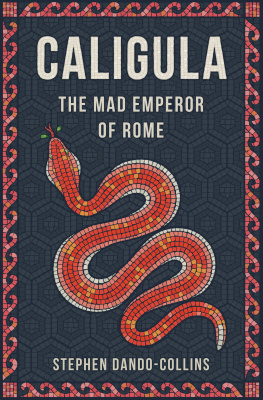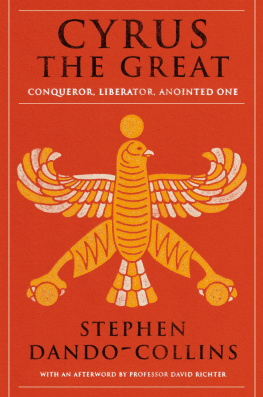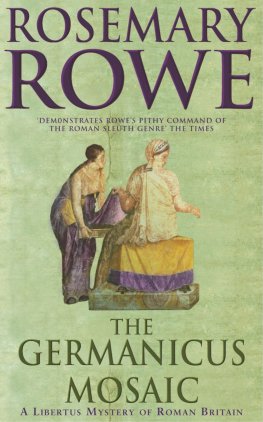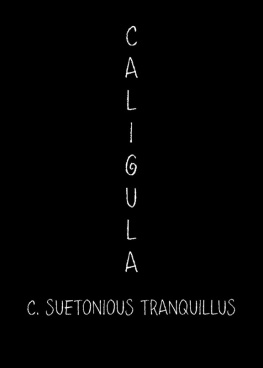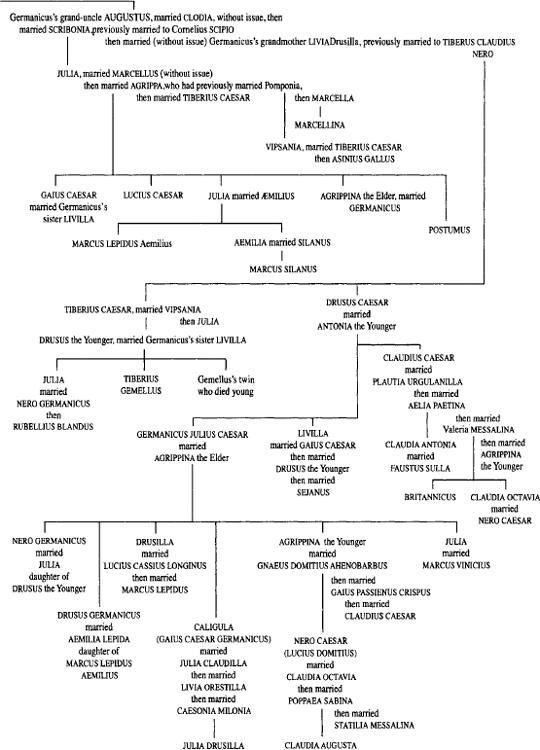Also by Stephen Dando-Collins
Caesars Legion: The Epic Saga of Julius Caesars Elite Tenth Legion and the Armies of Rome
Neros Killing Machine: The True Story of Romes Remarkable Fourteenth Legion
Cleopatras Kidnappers: How Caesars Sixth Legion Gave Egypt to Rome and Rome to Caesar
Mark Antonys Heroes: How the Third Gallica Legion Saved an Apostle and Created an Emperor
BLOOD OF THE CAESARS
HOW THE MURDER OF
GERMANICUS LED
TO THE FALL OF ROME
STEPHEN DANDO-COLLINS
Copyright 2008 by Stephen Dando-Collins. All rights reserved
Maps 2008 by D. L. McElhannon
Published by John Wiley & Sons, Inc., Hoboken, New Jersey
Published simultaneously in Canada
No part of this publication may be reproduced, stored in a retrieval system, or transmitted in any form or by any means, electronic, mechanical, photocopying, recording, scanning, or otherwise, except as permitted under Section 107 or 108 of the 1976 United States Copyright Act, without either the prior written permission of the Publisher, or authorization through payment of the appropriate per-copy fee to the Copyright Clearance Center, 222 Rosewood Drive, Danvers, MA 01923, (978) 750-8400, fax (978) 646-8600, or on the web at www.copyright.com. Requests to the Publisher for permission should be addressed to the Permissions Department, John Wiley & Sons, Inc., 111 River Street, Hoboken, NJ 07030, (201) 748-6011, fax (201) 748-6008, or online at http://www.wiley.com/go/permissions.
Limit of Liability/Disclaimer of Warranty: While the publisher and the author have used their best efforts in preparing this book, they make no representations or warranties with respect to the accuracy or completeness of the contents of this book and specifically disclaim any implied warranties of merchantability or fitness for a particular purpose. No warranty may be created or extended by sales representatives or written sales materials. The advice and strategies contained herein may not be suitable for your situation. You should consult with a professional where appropriate. Neither the publisher nor the author shall be liable for any loss of profit or any other commercial damages, including but not limited to special, incidental, consequential, or other damages.
For general information about our other products and services, please contact our Customer Care Department within the United States at (800) 762-2974, outside the United States at (317) 572-3993 or fax (317) 572-4002.
ISBN 978-0-470-13741-3
Printed in the United States of America
10 9 8 7 6 5 4 3 2
CONTENTS
ATLAS
1. The Roman World, A.D. First Century
2. Rome, A.D. 1868
ACKNOWLEDGMENTS
Over the decades that I spent researching ancient Rome for my series of histories of the legions of Rome, the character of Germanicus Julius Caesar loomed larger and larger in my consciousness. The more I learned about this charismatic character, this pivotal yet virtually unknown figure in Roman history, the more I wanted to know. The mystery of Germanicuss death, with its fatal implications for so many members of his family, the family of the Caesars, began to exercise my thoughts very early into my research. But it would be many years before the evidence began to take shape, before the mystery unraveled and the scenario of how the murder was conceived and carried out fell into place, and until I was able to determine who had killed Germanicus, and why.
Often, historical forensic works such as this credit a small army of helpers. Indeed, my American history about a nineteenth-century legal case involving Native American chief Standing Bear lists a number of sources without whom I could not have written that book, from leading figures within his Ponca Indian tribe to Native American researchers and a hugely helpful Omaha newspaper publisher. While I have been aided by many kind people dealing with Roman history at libraries, universities, and historic sites over the decades, this particular book is all my own work. Its theories and conclusions are entirely my own, formed on the back of my many years of research into the history of ancient Rome and using what modest skills as an interpretive historian I may have developed over those years.
My grateful thanks go to my all-conquering New York literary agent, Richard Curtis, who originally steered me onto the legion history path, for encouraging me to explore the Germanicus case and its historical repercussions. My thanks, too, to Stephen S. Power, my editor at Wiley for a number of years now, who saw the potential for the book and helped me focus on the essential elements and the implications for Rome of the murder of Germanicus. Thanks, too, to production editor John Simko and copy editor Bill Drennan for their usual thorough work on the typescript.
My special thanks, as always, go to my inspiration, my wife, Louise. We two are great walkers. For decades, on our walks, I have told Louise stories that had not been widely told before, stories I have found buried in history. Stories about soldiers and emperors, tribal chiefs and presidents, millionaires and idealists, scientists and politicians, sea captains and revolutionaries. Stories in which ambition sometimes clouded otherwise clever minds, and in which brave men and stalwart women stood up for what they believed in, even if they were wrong. For years, Louise was the only one who listened. Her story, of her faith and support, is the greatest one of all.
INTRODUCTION
The fall of Imperial Rome has been ascribed to many things.Some say the fall was generated from without, blaming the invasions of the Visigoths, Huns and others from the east, with the fifth-century sacking of Rome by the Vandals serving as a prelude to the final collapse. Others say it had an internal cause during this same period, blaming weak emperors, or overly ambitious and jealous propraetors and generals who rent the empire with civil wars that sapped it of its manpower, wealth, and cohesion for centuries, leaving it incapable of meeting the outside threats.
There are those who blame the rise of Christianity for the fall of Rome. They claim that where veneration of the Roman pantheon had been just one brick in the foundation of Roman life, Christian leaders sought to make the new faith the sole foundation, to the exclusion of the other factors that had previously made Rome great.


